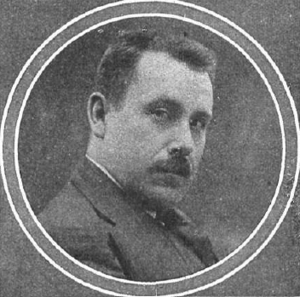Pablo Luna facts for kids
Pablo Luna Carné (born May 21, 1879, in Alhama de Aragón; died January 28, 1942, in Madrid) was a famous Spanish composer. He wrote many different kinds of music. His most well-known song is "De España vengo." It comes from his musical play called El niño judío.
Contents
Pablo Luna's Life Story
Pablo Luna started learning music when he was young. He got his first lessons in music theory from an organist. This was at a church in his hometown, Alhama de Aragón. His father, Pablo Luna Ferrer, was a member of the Civil Guard. His family moved to the Ebro valley.
Pablo studied how to put music together, called harmony. He learned from Teodoro Ballo. He also studied composition, which is how to create music, with Miguel Arnaudas. Pablo was a violinist. He earned money by playing music in hotels, cafes, and churches. He also played in a small orchestra and in theaters. In 1903, he wrote his first operetta. It was called Lolilla, la Petenera. An operetta is like a light opera with singing and speaking. The next year, in 1904, he wrote La Escalera de los Duendes, which means The Ladder of the Elves.
In 1905, Pablo moved to Madrid. He wanted to learn more about zarzuela. A zarzuela is a Spanish musical play. It mixes spoken parts with singing and dancing. He met important people there. These included Ruperto Chapí and Jerónimo Giménez y Bellido. He also met Luis Pascual Frutos, who wrote the story for his operetta Mussetta. This play was very popular when it first opened in 1908. After that, he created many more stage shows.
His zarzuela Molinos de viento (Windmills) was a big hit. It opened in Zaragoza on March 11, 1911. Pablo Luna himself led the orchestra. This was for the reopening of the Teatro de la Zarzuela in 1914. The theater had been damaged by a fire. In 1918, he released one of his greatest works. This was El niño Judío (The Jewish Boy). It was known for its exciting and unique style.
In March 1925, a special concert was held to honor him. He received the gold medal from the city of Zaragoza. He finished his three most successful zarzuelas with Benamor in 1928.
Pablo Luna also wrote eleven movie scripts. He used a different name for these, García Sandoval. Today, several streets are named after Pablo Luna. There is also a school named after him in Alhama de Aragón.
Pablo Luna's Musical Works
Pablo Luna wrote many different types of music. He composed for orchestras and bands. He also created many works for the stage.
Works for Orchestra and Band
He wrote pieces for full orchestras. One example is Una noche en Calatayud, which is a fantasy suite. He also composed music for bands. These included marches and selections from his popular stage shows. Some band pieces were "Danza del Fuego" from Benamor and "Selección" from El niño judío.
Theatrical Works
Pablo Luna was very famous for his stage works. These included revistas, operetas, and zarzuelas.
Revistas
Revistas were like musical variety shows. They often had comedy and songs.
- 1909 A.C.T., Que se va el tío
- 1918 La Mujer artificial o la receta del doctor Miró
- 1924 Rosa de fuego
Operetas
Operetas are lighter forms of opera. They mix singing with spoken dialogue.
- 1908 Musseta
- 1910 Molinos de viento
- 1916 El Asombro de Damasco
- 1923 Benamor
Zarzuelas
Zarzuelas are Spanish musical plays. They are a very important part of Spanish culture.
- 1903 Lolilla, la Petenera
- 1904 Escalera de los Duendes
- 1918 El niño judío
- 1928 La Pícara molinera
- 1941 Las Calatravas
See also
 In Spanish: Pablo Luna para niños
In Spanish: Pablo Luna para niños


